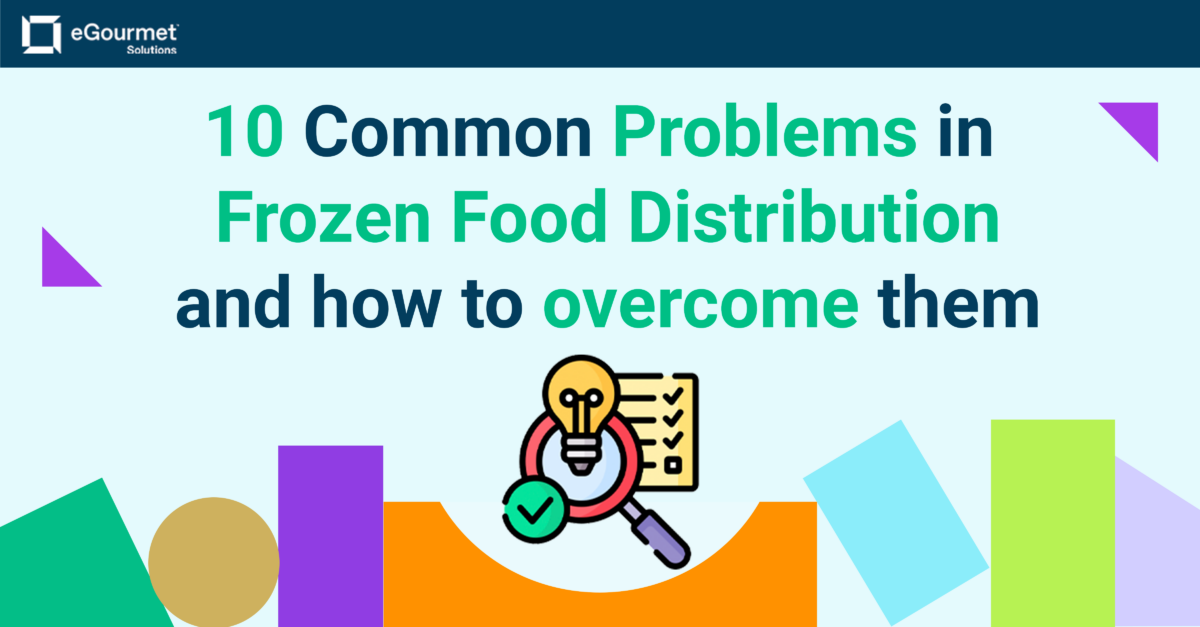
Frozen food distribution presents unique challenges that require strategic solutions to ensure optimal outcomes. In this guide, we’ll look at ten common problems frozen food distributors face and give practical tips for solving them. From temperature control to inventory management, we’ll cover essential aspects of distribution management to help you navigate the complexities of the frozen food supply chain successfully.
1. Temperature Control:
Maintaining consistent temperature control is essential for preserving the quality and safety of frozen foods during transportation and storage. Implementing robust temperature monitoring systems and investing in specialized refrigeration equipment can help mitigate risks and ensure compliance with regulatory standards. -18° C (0F) is the industry standard (FDA), although more and more people are pushing the move to -15° C (5F)to save energy (Food Ingredients 1st).
2. Quality Preservation:
Preserving the high quality of frozen foods is important to satisfy customers and maintain a good brand image. Companies can achieve this by using strict quality control methods during production, from raw material sourcing and preparation to packaging and storage, as well as postproduction quality monitoring through regular inspections. These methods help reduce defects and maintain consistent quality throughout the supply chain.
3. Logistics Optimization:
Efficient logistics management is essential for streamlining distribution operations and minimizing costs in frozen food distribution. Leveraging advanced logistics software for route optimization, inventory tracking, and scheduling can enhance efficiency and responsiveness within the supply chain. Approximately 13% of all food produced globally is lost due to poor cold storage supply chains every year (CNBC).
4. Inventory Management:
Effective inventory management is critical for maintaining optimal stock levels while minimizing waste in frozen food distribution. Implementing automated inventory tracking systems and adopting demand forecasting techniques can facilitate accurate inventory oversight and support timely replenishment strategies.
5. Packaging Solutions:
Selecting appropriate packaging solutions that balance product protection, sustainability, and consumer appeal is vital in frozen food distribution. Collaborating with packaging suppliers to explore innovative packaging designs and materials can optimize product presentation and minimize environmental impact. Most consumers are willing to pay more for sustainable packaging (McKinsey).
6. Transportation Efficiency:
Maximizing transportation efficiency is essential for reducing costs and improving delivery reliability in frozen food distribution. Exploring alternative transportation modes, optimizing route planning, and implementing real-time tracking technology can help optimize transportation networks and enhance customer satisfaction.
7. Regulatory Compliance:
Navigating complex regulatory requirements governing food safety and quality standards is imperative for frozen food distributors. Investing in ongoing compliance training for staff, maintaining meticulous record-keeping practices, and conducting regular audits can ensure adherence to regulatory mandates and mitigate compliance risks. Check out our previous blog “Navigating Frozen Food Distribution Regulations” for more info!
8. Seasonal Demand Fluctuations:
Managing fluctuations in demand across seasons requires strategic planning and flexibility in production and inventory management. Implementing agile production scheduling processes, offering seasonal promotions, and diversifying product offerings can help align supply with demand dynamics and capitalize on seasonal opportunities.
9. Shelf-Life Optimization:
Maximizing the shelf life of frozen foods is essential for minimizing product spoilage and reducing waste. Adhering to FEFO inventory management principles, optimizing storage conditions, and implementing robust rotation procedures can extend product shelf life and enhance overall product freshness.
10. Customer Satisfaction:
Delivering superior customer experiences is paramount in the competitive landscape of frozen food distribution. Prioritizing prompt and reliable delivery, offering responsive customer support, and soliciting feedback to drive continuous improvement initiatives can foster strong customer relationships and loyalty.
Successfully navigating the challenges in frozen food distribution requires a strategic approach and a commitment to excellence in every aspect of the supply chain. By following the steps in this guide, companies learn how to ship frozen food. Partner with eGourmet Solutions, the leading turnkey 3PL company, and let us handle it for you. Explore our services here and partner with us today.